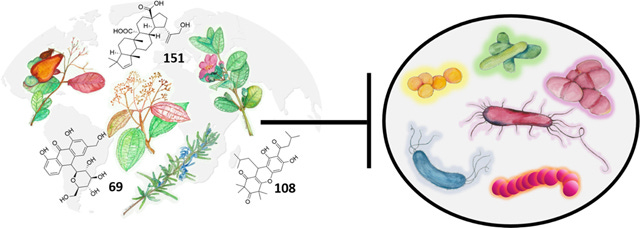Pollution Contributing to Rise of “Superbugs,” UN Report Finds
Planetary health is inextricably linked to human health. Pollution is one of many contributors to ecosystem integrity and biodiversity decline.
Pollution creates the perfect storm for the emergence of antimicrobial resistance in infectious microbes.
Yesterday, a new report “Bracing for Superbugs: Strengthening environmental action in the One Health response to antimicrobial resistance” was released by the United Nations Environment Program. The press release for the report mentions a triple planetary crisis:
The triple planetary crisis entails higher temperatures and extreme weather patterns, land-use changes that alter its microbial diversity, as well as biological and chemical pollution. All these contribute to the development and spread of AMR.
Highlights from the report include:
Warnings that AMR could significantly affect both human health and agricultural production.
Recognition that the misuse of antimicrobials and release of pollutants (microplastics, agrichemicals, wastewater, effluent from pharmaceutical production, and agricultural run-off) into the environment creates the perfect storm for AMR to develop and spread.
A call to action for a “One Health” approach in recognition that the health of people, animals, plants, and the environment are all connected.
AMR: What is it?
According to the WHO, antimicrobial resistance (AMR) occurs when bacteria, viruses, fungi, and parasites change over time and no longer respond to medicines making infections more challenging to treat and increasing the risk of disease spread, severe illness, and death.
Consequences of AMR
Experts estimate that by mid-century, we will see up to 10 million deaths annually due to AMR. We are in the midst of an antibiotic discovery void, with the last new class of antibiotics to make it to market discovered in 1984!
Pollution and AMR
The report includes a call to action for governments around the globe to implement a comprehensive set of measures to reduce the release of AMR-driving pollutants in the environment. Some key pollution sources of concern include:
Sewage
Healthcare sector
Community and municipal wastes
Pharmaceutical manufacturing
Intensive industrial agriculture (plants or animals) and aquaculture
Where Do Plants Fit In?
I think plants fit into this discussion in several ways, but I’ll focus on two here.
Agriculture
The monoculture (single species) mass production of plants in agriculture—whether for ornamental flowers or food and fodder crops—necessitates heavy use of agrichemicals to ensure crop survival. By taking away biodiversity in our food systems, we increasingly rely on potent antifungals, pesticides, and herbicides to secure our crops. These chemicals don’t only land on the plants but also become concentrated in the environment. This has far-reaching and immediate implications for human health. One example is the spread of AMR Aspergillus (a fungus found in the soil that can cause life-threatening infections in humans). To secure our crops and our own health, new strategies integrating biodynamic and fungicide-free practices need to be researched and implemented.
Drug Discovery
Plants can also help us in the fight against AMR! In 2021, my research group at Emory University published a comprehensive review article to address a straightforward question: What do we know about plant-derived antibiotics?
We scoured thousands of scientific articles and identified 459 compounds with promising activity against drug-resistant bacteria. Plants have long been ignored in the pharmaceutical development space. Still, they are experiencing more interest now that it has become clear that the antibiotic discovery approaches of the past 30 years have been met with little success. At the same time, we are facing threats to the biodiversity of plants found in the wild. To secure the drugs and foods of the future, we must save the ecosystems where they are found.
What does this mean for you?
The UN report emphasizes that prevention is at the core of the approach to halt the emergence of AMR in the environment. While the report focuses on broader government actions, I also believe in the power of many small steps at the community and household levels. Small actions you can take:
Contribute to biodiversity in your neighborhood. Get involved in local parks and groups dedicated to preserving native plant habitats.
Reduce or eliminate the use of herbicides and pesticides in your yard and garden. These have harmful effects on pollinators and can disrupt the soil microbiome in your environment.
Reduce or eliminate the use of plastics in your daily routines. Larger plastics can break down into smaller pieces (microplastics), contaminating our rivers, oceans, and soil.
No matter how large and seemingly impossible the situation is, step-by-step, we can all make a difference in support of planetary and human health in our own communities and beyond.
Yours in health, Dr. Quave
Nature’s Pharmacy is written by Cassandra L. Quave, Ph.D.—a disabled writer, speaker, podcast host, professor, wife, mother, explorer, and ethnobotanist. Dr. Quave is Associate Professor of Dermatology and Human Health at Emory University School of Medicine. She has written about her work as a scientist in The Plant Hunter: A Scientist’s Quest for Nature’s Next Medicines (Viking/Penguin 2021). During the day, she teaches college courses and leads a large group of talented research scientists studying medicinal plants in the search for new life-saving drugs from nature. In her spare time she hosts the Foodie Pharmacology podcast and writes this newsletter. Her main goal is to share the incredible science behind the medicines found in nature. This newsletter is only possible through the generous support of fellow Nature’s Pharmacy community members. To support this effort and join the community, subscribe below.






